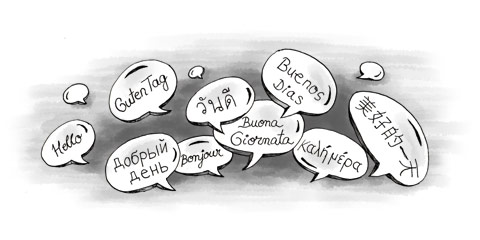One of the most common and universal features of Peruvian Spanish, similar to other South American versions of Spanish, is the use of ustedes (3rd person plural) in place of vosotros (2nd person plural). For example, you are likely to be greeted with ¿cómo están? instead of ¿cómo estáis?.
Moreover, diminutives are very popular across South America. They appear on the end of nouns (e.g. gringuito, from gringo).
Specifically speaking, there are four principal varieties of Spanish spoken in Peru. The Spanish first arrived on the land that is now Peru in 1532, bringing dialects of Extremaduran, Andalusian, Canarian, and later Castilian. To begin with, Spanish was only spoken in the cities by the Spanish and mestizos (people of European and American Indian descent), while the rural Andean speakers continued to speak Quechua and other indigenous languages. Spanish was then imposed as the official language and overtook native languages as the majority language. Then began the evolution of regional Spanish dialects in Peru.
Andean Spanish in Peru
The first of the regional Spanish varieties is Andean Spanish, which is the most common dialect in the rural areas around the Andes and has similarities with the ‘standard’ dialect of Ecuador and Bolivia.
One distinction of Andean Peruvian Spanish is the slow time and unique rhythm, compared to the fast pace of European Spanish and sometimes other South American forms of Spanish.
Andean Spanish speakers also have difficulty in distinguishing vowel sounds (between ‘e’ & ‘i’, and between ‘o’ & ‘u’), and the apical “s” is produced with more force than that of coastal Spanish.
Other features include the duplication of possessives (e.g. su casa de Pepe [would ‘normally’ be la casa de Pepe or su casa, meaning ‘Pepe’s house’]), the use of no más (no more/longer) and pues (so/then) after the verb (e.g. dile nomás pues [usually pues no lo digas más, meaning ‘don’t say it anymore’]), and the use of the present tense to express the preterite (past).
Coastal Spanish
Peruvian coastal Spanish is spoken by the upper classes in Lima, or those who have been in contact with migrants in the cities or on the coast for a long time. Despite being spoken by a minority, it has the reputation of being ‘normal’ Peruvian Spanish.
In this dialect, vowels are pronounced clearly for the same duration, the “s” is ‘aspirated’ or silenced before a consonant, and the “d” sound at the end of a word is changed to a “t” sound.
General Spanish phrases from the Americas are common, but some phrases originate from the Lima coastal area, such as frequent terms and expressions. The most ‘ingrained’ term originating from Quechua is calato, meaning ‘naked’, but there is also the expression “tengo una yaya” which means ‘I have an injury’ - yaya is the Quechua word for ‘injury’.
Born somewhere around 30-50 years ago, Andean-coastal Spanish is a mixture of the speech of Andean migrants and Lima inhabitants. It is the most typical dialect of Peru. In terms of recognisable characteristics, Andean-coastal Spanish, like Andean Spanish, confuses the vowel pairs ‘e-i’ and ‘o-u’ in casual conversation. Moreover, consonant sounds like ‘b’, ‘d’ and ‘g’ are weakened and sometimes even omitted when they appear between vowels (e.g. dado pronounced da’o), and voiceless consonants like ‘p’ will often convert into their voiced partner (e.g. epoca becomes eboca).
Amazonic Spanish
Amazonic Spanish is a unique development from contact between Andean Spanish, the Spanish of Lima and Amazonian languages. Its distinction is its tonal structure. Phonetically, there is often a confusion of ‘j’ and ‘f’ (e.g. San Juan becomes San Fuan), the ‘p’, ‘t’ and ‘k’ sounds are ‘aspirated’ (almost ‘breathed’ or left out), and syntactically, disorders of agreement are frequent.
Peruvian slang
Finally, we’ve compiled a short list of examples of expressions to give you an impression of general Peruvian ‘slang’:
asado - angry. Literally, ‘roasting’, a bit like the English ‘fuming’.
bamba - fake, imitation. You’ll often hear this in Peruvian markets where fake goods and fake money are both in circulation.
bróder - friend (from English ‘brother’)
bacán, chevere, choy - cool
chamba - work, employment
chancha - collection of money between friends, usually for a beer.
cocho/a - old person
costilla - girlfriend. Literally, ‘rib’, a reference to the creation of Eve from Adam’s rib.
jama - food (jamear = to eat)
luca - one Peruvian Nuevo Sol
pata - guy, friend
¡Que roche! - what a shame!
weon - equivalent to the British vocative, ‘mate’.

